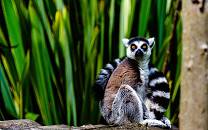- You are here:
- Home
- Countries & Parks
- Madagascar Parks
- Tsimanampetsotsa National Park
Overview – Tsimanampetsotsa NP

Philip is a renowned Africa expert and author of many guidebooks to African destinations, including the Insight guide to Madagascar.
Philip is a renowned Africa expert and author of the Insight Guide to Madagascar.
Philip is the author of the Insight Guide to Madagascar.
Tsimanampetsotsa National Park (Parc National Tsimanampetsotsa) is named after the shallow alkaline lake that forms its centerpiece. The lake is home to an abundance of birds, including flocks of greater and lesser flamingo. The park also protects a large area of pristine spiny forest with a high number of endemic succulent plants. Wildlife highlights include dancing Verreaux’s sifaka and ring-tailed lemurs.


Pros & Cons
- Pristine spiny forest
- Lots of wildlife and great birding
- Several hiking circuits available
- Cave diving available to experienced divers
- It gets very hot, which can be a challenge on longer hikes
- No accommodations inside the park; it’s camping only
- Inaccessible, off-the-beaten-track destination
Tsimanampetsotsa NP Safari Reviews
- Expert Rating 0.0/5– 0 Reviews
- Wildlife
- Scenery
- Bush Vibe
- Birding
- User Rating 0.0/5– 0 Reviews
- Wildlife
- Scenery
- Bush Vibe
- Birding
Wildlife
The park is home to 24 mammal species. The most easily seen lemurs during the daytime are the Verreaux’s sifaka and ring-tailed lemurs. At night, look for white-footed sportive lemur, fat-tailed dwarf lemur and grey-brown mouse lemur. Night walks also offer the chance to see the endangered mongoose-like Grandidier’s vontsira. Lots of reptiles inhabit the spiny forest, including radiated and spider tortoise. More of a curiosity is the blind sleeper goby, a fish unique to a pool in the sacred Mitoho Grotto.
Scenery
Botanists will enjoy the unique flora of the large spiny forest. There are some superb baobab trees dotted around the limestone plateau. A particular point of interest is an enormous banyan tree whose spectacular roots grow above the ground. There are several viewpoints over the lake, which doubles in size during the Wet season.
Activities
Tsimanampetsotsa is a park suited to those who enjoy camping, because there are no accommodations other than a simple campsite. Several walking trails start at the campsite, but hikers must be accompanied by a park guide. The trails are good for bird watching and lemur spotting, and your guide should also point out plenty of interesting trees and succulent plants. Several of the park’s flooded caves are suitable for diving, but you’ll need to bring equipment with you.
Weather & Climate
Tsimanampetsotsa has a hot dry climate typical of the southwest of Madagascar. Rain comes as a relief in the hot Wet season (November to March). These months have an average daytime temperature of 33°C/91°F. The Dry season (April to October) is more comfortable with temperatures about 5°C/41°F cooler on average.
Best Time To Visit
Tsimanampetsotsa is open throughout the year. It is very hot in the Wet season (November to March), so the cooler Dry season months (April to October) offer better hiking conditions. This is also when flamingos are present on the lake. The Wet season months tend to be better to see reptiles and lemurs that are active at night.
Want To Visit Tsimanampetsotsa NP?
Tsimanampetsotsa NP Safari Reviews
- Expert Rating 0.0/5– 0 Reviews
- Wildlife
- Scenery
- Bush Vibe
- Birding
- User Rating 0.0/5– 0 Reviews
- Wildlife
- Scenery
- Bush Vibe
- Birding


 Madagascar Parks
Madagascar Parks
